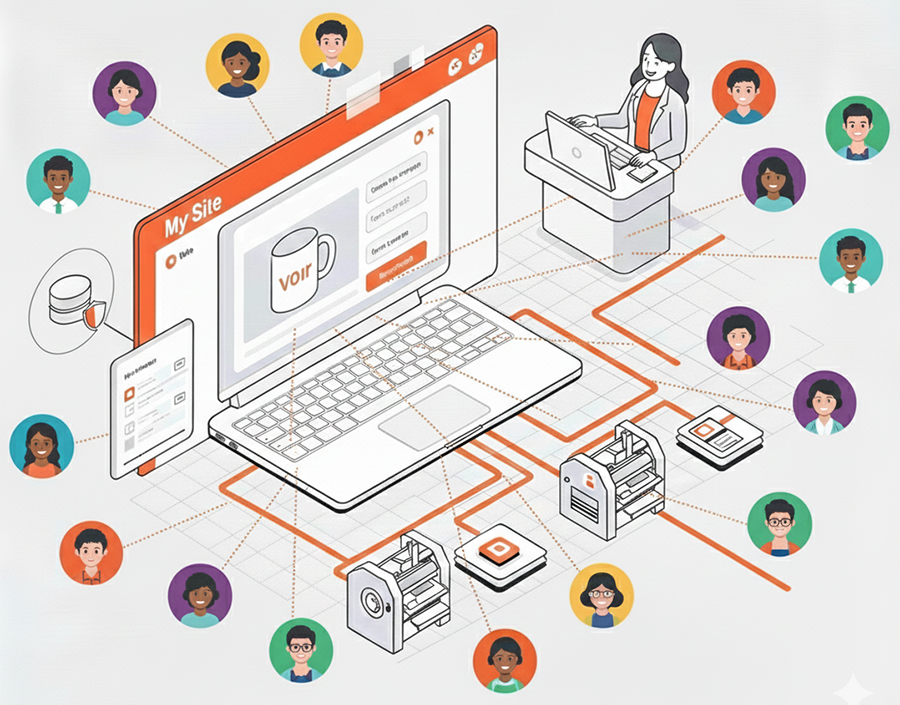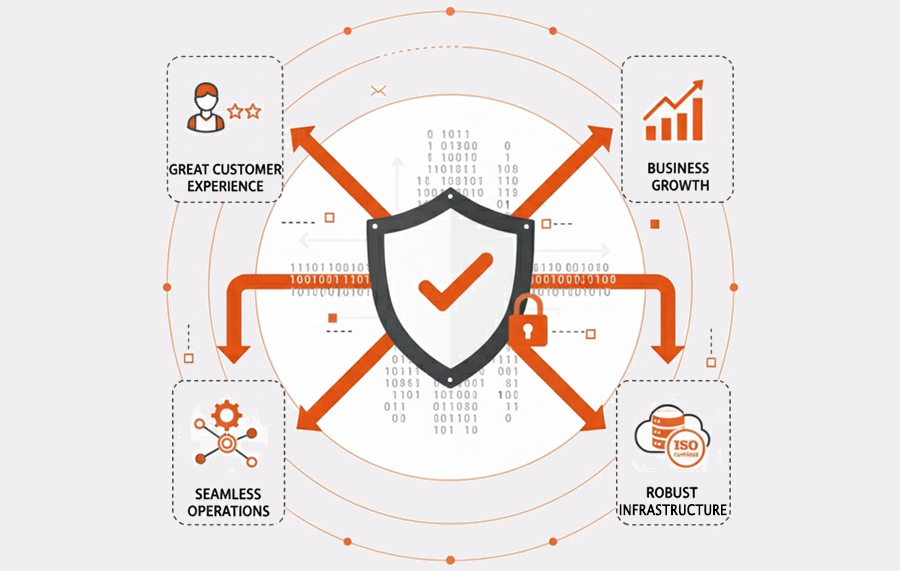20 December 2020
Web-to-Print or MIS? Adding Value To Your Customer Comes First

Web-to-Print or MIS? Adding Value To Your Customer Comes First
Imagine the scene if you will dear reader. A print business owner or manager sits down at their desk in the morning, they take their first sips of the morning brew, and with a small sigh they survey all the orders that have come in overnight and start to grapple with them manually –– trying to make sure the team is processing everything as they should, on price and on time. The realisation is there that day after day of this process there must be an easier, more automated way to handle this task in the 21^st^ century.
The next thought is often, but where do I start? Well, you will get different answers depending upon whom you ask and their own priorities.
As this is a Web-to-Print provider writing this article, you can guess the answer we are going to give you, but the facts remain true –– even though we can all have fun arguing over them.
The purpose of this article is to guide you to make the right decision to embrace automation in the most affordable, timely and logical way. And what is critical to understand is that it all starts with your customers. What is also very important to contemplate is the importance of entering a £200bn eCommerce market that is experiencing explosive growth^1.
Looking from The Outside In
No doubt, having a good management-information-system (MIS) supporting your business is going to offer you a myriad of advantages when it comes to efficiencies, integrations and scalability. This of course does not even touch the surface.
There is no argument that it is a great benefit to your business. The key question to ask yourself though is: How does it directly add value to your customer's business in a way that they recognise immediately?
The other key questions are: What do your customers think of you having a good MIS? And, how will it affect them in the short-term?
The reality is that your customers are not concerned with the efficiency of your internal systems and workflow, and they are also not worried about how the job gets done. What they want above all else today is being able to specify, order and receive the products they want with minimal fuss and maximum ease of use.
Your customers need a solution to engage with you more efficiently, but not just with them, but with their stakeholders within their organisation. For you, you need to tie in your existing customer, which is what a good Web-to-Print system does automatically.
You also need something to attract new customers, making your business stand out from everyone else, and offering a value-add service that others will not. With an online solution you immediately enter a group of print businesses that are successfully leveraging their in-house skills, product specialisms, creative expertise and production experience to grow and access a much wider market –– all while delivering more value to your existing customers.
Speed to Market
Getting started with Web-to-Print begins with speaking to your customers to find out what they want. Service and quality will always remain high on their list. They will want to see your business offering advantages over other print providers to ensure their engagement with your business is easier and more convenient for them.
Implementing an MIS really makes no short-term difference to a customer, as most advantages are internal. If any of those changes affect the customer, they will be months or years down the line.
Web-to-Print however can make an impact in days to weeks to both you and your customers. It allows your customers access to order from your business 24/7 – 365. Not worrying if their Zoom meeting runs over it is now 5:45pm and too late to get an email reply or call you.
An effective Web-to-Print solution really shows your business is open when they need it, for ordering what they want at their convenience. So, they don't need to worry, just get home, have some tea, get the kids in bed and then order what they need at their convenience –– all the while knowing that order direct to the printer, or to the warehouse, will be despatched in the morning when the staff get in.
Low Cost to High Cost
We all have a finite budget, every Pound spent needs to generate at least three in terms of return on investment. This means the investment you make, and when you make it, is critical.
There is no doubt implementing an MIS to bring internal business efficiency is a sound one. But it will take perhaps one or more years for you to really start seeing the benefits (perhaps less with semi-automated estimating).
Web-to-Print however can start to give you a positive cashflow almost instantly, with features like implementing a payment gateway –– where a customer pays for the goods at the point of order, like everything else in the world.
Systems such as PunchOut Integration for corporate procurement platforms also ensures that purchase order validation happens before the order is submitted. This is key, as you are assured of an unimpeded payment process –– possibly in four working days form the order.
The conclusions here is that Web-to-Print, when implemented correctly, can give you a secure and automated revenue stream with no invoicing, which in turn saves you money on your bottom line. There can be no doubt that any Pound spent on a Web-to-Print solution will give a far faster return if approached correctly.
Instant Change to Planned Change
Now, it may have dawned on you by now that making changes to your business in order to achieve efficiency through automation, is a good idea. So, the next most common question we hear is: how quickly can we implement it?
An average MIS implementation is going to take around six+ months to achieve full integration and for all the bugs to be worked out and solved. It is an incredibly worthwhile project to undertake, but if your goal is revenue and market share growth, then it is not a short-term answer.
If you look to a Web-to-Print integration, then you can fundamentally see a return on a investment in days. What is also key here is that once you have had your training and start your customers ordering online, delivering them very significant increases in convenience, we can promise that you and they will not look back. Additionally, with job submission being directed straight to your workflow will also give you and your team critical time back that can be spent on prospecting for new customers or adding additional creativity and value to existing accounts.
Conclusion
Whichever way you look at it, Web-to-Print is the first building block when it comes to delivering value to your customers, tying them in for the longer term and facilitating a "sticky" relationship –– where your business becomes an extension of your customer's marketing and communications operation.
Simply put, they can order what they want, when they want it, while giving you optimised files ready for production. Once you have a working "shop front" for your business, a good solution will also give you the analytics of what jobs are coming in and how they are being processed. This data is ideal for you to find the MIS that best suits your business, thus building the efficiencies needed by your customer base and the profile of the jobs they submit to you –– as opposed to guessing what MIS you need.
Web-to-Print or MIS? Adding Value To Your Customer Comes First
Table of contents
Share this article


